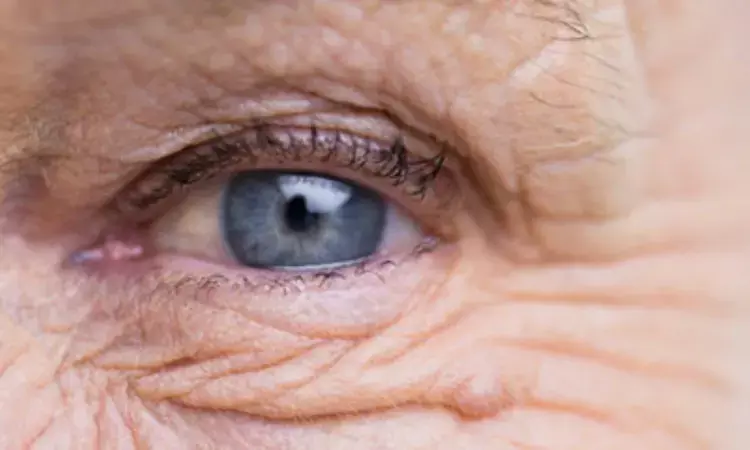- Home
- Medical news & Guidelines
- Anesthesiology
- Cardiology and CTVS
- Critical Care
- Dentistry
- Dermatology
- Diabetes and Endocrinology
- ENT
- Gastroenterology
- Medicine
- Nephrology
- Neurology
- Obstretics-Gynaecology
- Oncology
- Ophthalmology
- Orthopaedics
- Pediatrics-Neonatology
- Psychiatry
- Pulmonology
- Radiology
- Surgery
- Urology
- Laboratory Medicine
- Diet
- Nursing
- Paramedical
- Physiotherapy
- Health news
- Fact Check
- Bone Health Fact Check
- Brain Health Fact Check
- Cancer Related Fact Check
- Child Care Fact Check
- Dental and oral health fact check
- Diabetes and metabolic health fact check
- Diet and Nutrition Fact Check
- Eye and ENT Care Fact Check
- Fitness fact check
- Gut health fact check
- Heart health fact check
- Kidney health fact check
- Medical education fact check
- Men's health fact check
- Respiratory fact check
- Skin and hair care fact check
- Vaccine and Immunization fact check
- Women's health fact check
- AYUSH
- State News
- Andaman and Nicobar Islands
- Andhra Pradesh
- Arunachal Pradesh
- Assam
- Bihar
- Chandigarh
- Chattisgarh
- Dadra and Nagar Haveli
- Daman and Diu
- Delhi
- Goa
- Gujarat
- Haryana
- Himachal Pradesh
- Jammu & Kashmir
- Jharkhand
- Karnataka
- Kerala
- Ladakh
- Lakshadweep
- Madhya Pradesh
- Maharashtra
- Manipur
- Meghalaya
- Mizoram
- Nagaland
- Odisha
- Puducherry
- Punjab
- Rajasthan
- Sikkim
- Tamil Nadu
- Telangana
- Tripura
- Uttar Pradesh
- Uttrakhand
- West Bengal
- Medical Education
- Industry
Prophylactic Ranibizumab Injections Fail to Halt AMD Progression

A recent study published in the Translational Vision Science & Technology revealed that prophylactic ranibizumab (PR) injections administered every three months have shown no substantial impact on intermediate nonexudative age-related macular degeneration (AMD).
The PREVENT trial aimed at evaluating the efficacy of PR injections, focused on assessing their influence on drusen volume, macular layer thicknesses, and the progression of geographic atrophy (GA) area over a 24-month period.
The study compared two groups of individuals with intermediate AMD: one group receiving PR injections and another receiving sham injections as a control. Researchers analyzed various parameters using spectral-domain optical coherence tomography and fundus autofluorescence images to determine any notable differences between the two groups.
The results of the analysis showed no statistically significant differences between the PR group and the control group in terms of drusen area and volume. Furthermore, both groups exhibited similar reductions in central subfield thickness, mean cube thickness, cube volume, and retinal sublayer thickness over the 24-month period. These findings underscored the ineffectiveness of PR injections in altering the anatomical characteristics of the macula in intermediate AMD patients.
Notably, the presence or absence of subretinal drusenoid deposits (SDDs), often considered an aggravating factor in AMD progression, did not influence the outcomes. Among the nine eyes in the study with GA, the growth rate of GA over 24 months showed no significant difference between the PR group and the control group.
The mean GA growth rate after PR was 1.34 mm²/year, compared to 1.95 mm²/year in the sham-treated eyes. Even after square root transformation, no statistical difference was found.
In summary, the results of this post hoc analysis of the PREVENT trial paint a bleak picture for the potential of prophylactic ranibizumab injections in the management of intermediate AMD. Despite high hopes for this intervention, it appears that PR injections given every three months fail to make a substantial impact on drusen volume, macular thinning, or GA progression in affected eyes.
Source:
Chan, C. K., Beaulieu, W. T., Lujan, B. J., Lalezary, M., Lent-Schochet, D., Lo, T., & Yiu, G. (2023). Impact of Prophylactic Ranibizumab to Prevent Neovascular Age-Related Macular Degeneration on Eyes With Intermediate Age-Related Macular Degeneration. In Translational Vision Science & Technology (Vol. 12, Issue 9, p. 1). Association for Research in Vision and Ophthalmology (ARVO). https://doi.org/10.1167/tvst.12.9.1
Neuroscience Masters graduate
Jacinthlyn Sylvia, a Neuroscience Master's graduate from Chennai has worked extensively in deciphering the neurobiology of cognition and motor control in aging. She also has spread-out exposure to Neurosurgery from her Bachelor’s. She is currently involved in active Neuro-Oncology research. She is an upcoming neuroscientist with a fiery passion for writing. Her news cover at Medical Dialogues feature recent discoveries and updates from the healthcare and biomedical research fields. She can be reached at editorial@medicaldialogues.in
Dr Kamal Kant Kohli-MBBS, DTCD- a chest specialist with more than 30 years of practice and a flair for writing clinical articles, Dr Kamal Kant Kohli joined Medical Dialogues as a Chief Editor of Medical News. Besides writing articles, as an editor, he proofreads and verifies all the medical content published on Medical Dialogues including those coming from journals, studies,medical conferences,guidelines etc. Email: drkohli@medicaldialogues.in. Contact no. 011-43720751


